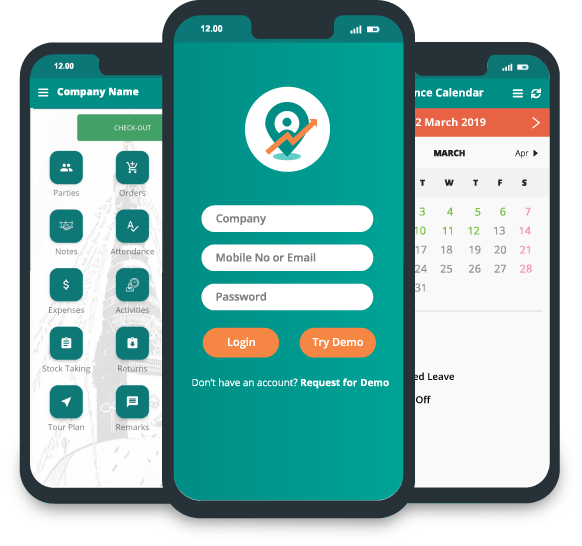The Evolution Of Mobile Sales Applications: A Journey From Basic To Advanced
_(11)_1715855639.png)
The landscape of mobile sales applications has transformed dramatically over the past two decades. From the early days of basic apps to today's sophisticated, AI-driven platforms, the journey has been marked by continuous innovation and adaptation to changing consumer behaviors. In this blog, we’ll explore the evolution of mobile sales applications, highlighting key milestones and emerging trends.
Early Stages: The Dawn of Mobile Sales Apps
In the early 2000s, mobile sales applications were rudimentary. These apps provided basic information about products and services and were often limited by the capabilities of early smartphones and slow mobile internet speeds. Businesses began to see the potential of mobile apps as a way to reach customers on the go, but the technology was still in its infancy.
Rise of Smartphones and App Stores
The late 2000s brought a seismic shift with the launch of the iPhone in 2007 and the subsequent introduction of app stores. This revolutionized mobile applications, allowing businesses to develop more sophisticated apps capable of handling transactions, tracking inventory, and offering customer support. The convenience of mobile shopping began to catch on, paving the way for the next stage of evolution.
Integration with E-commerce
During the 2010s, mobile sales apps began integrating with e-commerce platforms, creating seamless shopping experiences. Features such as mobile payments, push notifications, and personalized recommendations became standard. Industry giants like Amazon and eBay set benchmarks, showcasing the potential of mobile sales apps in driving revenue and enhancing customer satisfaction.
Advanced Features and Personalization
The mid to late 2010s saw mobile sales apps incorporating advanced features like augmented reality (AR) for virtual try-ons, AI-driven chatbots for customer service, and machine learning for personalized recommendations. User experience became a focal point, with apps designed for intuitive navigation and seamless interactions, ensuring customers could shop effortlessly from their mobile devices.
Omnichannel Integration
By the late 2010s and early 2020s, the concept of omnichannel retail emerged. Mobile sales apps were integrated with other sales channels, including physical stores, websites, and social media platforms, to provide a consistent customer experience. Innovations like mobile wallets, one-click checkouts, and loyalty programs integrated into mobile apps became commonplace, enhancing customer convenience and engagement.
AI and Machine Learning
The 2020s have seen AI and machine learning take center stage in mobile sales applications. These technologies enable features like predictive analytics, dynamic pricing, and highly personalized marketing. Voice assistants, such as Siri and Google Assistant, have been integrated into shopping experiences, allowing users to make purchases and interact with brands using voice commands.
Social Commerce and Influencer Integration
Social commerce has gained significant traction, with platforms like Instagram, TikTok, and Facebook offering in-app shopping experiences. Influencers play a crucial role in driving sales through mobile apps, leveraging their follower base to promote products and services. This integration of social media and e-commerce has created new opportunities for brands to connect with consumers.
Future Trends: What’s Next?
Looking ahead, the future of mobile sales applications is expected to include even more advanced AI capabilities, greater use of AR/VR for immersive shopping experiences, and deeper integration with emerging technologies like blockchain for secure transactions. Sustainability and ethical considerations are also likely to shape the development of these apps, with features that help consumers make more informed and eco-friendly purchasing decisions.
FAQs
1. What are the key features of modern mobile sales applications?
Modern mobile sales apps include features such as AI-driven recommendations, AR for virtual try-ons, mobile payments, push notifications, chatbots for customer service, and integration with social media platforms.
2. How has AI impacted mobile sales applications?
AI has revolutionized mobile sales apps by enabling predictive analytics, personalized marketing, dynamic pricing, and enhanced customer service through chatbots and voice assistants.
3. What is omnichannel integration, and why is it important?
Omnichannel integration ensures a consistent customer experience across multiple sales channels, including physical stores, websites, and mobile apps. It enhances customer convenience and engagement, leading to higher satisfaction and loyalty.
4. What trends can we expect in the future of mobile sales applications?
Future trends include advanced AI capabilities, greater use of AR/VR, deeper integration with blockchain technology, and a focus on sustainability and ethical shopping features.
As mobile sales applications continue to evolve, they will undoubtedly become even more integral to the shopping experience, offering greater convenience, personalization, and engagement for consumers worldwide.
About Delta Sales App
Delta Sales App is at the forefront of this evolution, offering a comprehensive sales management solution that leverages the latest technologies to streamline sales processes, enhance customer experiences, and drive business growth. Explore our app today to see how we can transform your sales operations.
For more information, visit Delta Sales App.









